The Land Of China -- Explore by Province
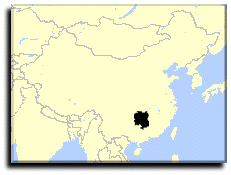 |
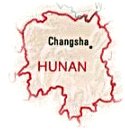 |
Hunan
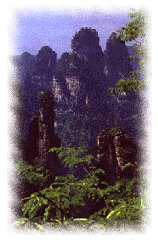
|
Hunan prides itself on its rich tourist resources, both natural and historical. These include 15 tourist areas, more than 100 tourist sites, and more than 180 historical sites under governmental protection. Among well-known Hunan attractions are Changsha as a historical and cultural city; relics unearthed at Mawangdui Tomb; Dongting Lake and Yueyang Tower in Yueyang; Mt. Hengshan; Taohua-yuan Nature Reserve in Changde; the Mausoleum of Emperor Yan in Zhuzhou; Mt. Jiuyi and the Mausoleum of Emperor Shun in Ningyuan; Jiashan Temple and the Tomb of Li Zicheng in Shimen; Suxian Ridge in Chenzhou; Meijiang River in Loudi; and the former residence of Mao Zedong in Shaoshan.
The Tujia, Miao, Dong, Yao, and Bai ethnic groups living in western Hunan are gifted dancers and singers, preserving many of their traditional customs. There is great potential for the development of tourist resources in the minority-inhabited areas of Western Hunan.
Capital city, Changsha, is famous for its Han tomb excavation, and the Hunan Provincial Museum displays relics excavated from the three 2100-year-old tombs. The 5000 relics are well preserved, among which are 1800 pieces of lacquerware which are well-preserved. The body of a woman, the wife of a marquis, is also incredibly well preserved. The Han Tomb Site is now a pyramid-shaped hill. Also in Changsha is the Hunan Provincial Embroidery Factory, a must-visit. Hunan's embroidery is one of the most famous in China. It is so fine that it can be displayed from either side.
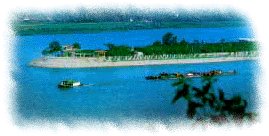
|
Orange Isle, one of the eight scenic wonders of the Xiangjiang River, is west of Changsha City. The Xiangjiang Bridge spans over the isle which is famous for its production of oranges and its beautiful scenery. The isle is six kilometers long and 0.5 kilometers wide from east to west. In 1925, Mao Zedong wrote his famous poem "Shangsha", in which he described the scenery of the isle and the Xingjiang River. Presently, the isle is a place for tourists. At the northwestern end of the isle is a natural swimming pool.
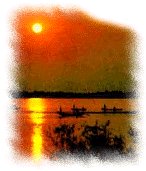
|
Situated in the north of Hunan Province, Dongting Lake is the second largest body of fresh water in China. Now the lake is divided into three sections: East Dongting Lake, South Dongting Lake, and West Dongting Lake. The area around Dongting Lake is well-known as the "Land of Fish and Rice". There are several islands in the lake; the most famous is Junshan Island, where silver needle tea is grown. Around the lake there is the Yueyang Tower, Mount Jun, Lu Sus Tomb, and a number of sites of historical interest.
Jushan Island
Jushan is a small island in the Dongting Lake and consists of 72 hilltops. There are many scenic spots and places of historic interest, and many touching fairy tales are told about the island. As the old saying goes, "the water in the Dongting Lake and Junshan in it are viewed as green from the distance. The island resembles a green snail in a silvery plate." This line was used by ancient people to describe the beautiful scenery of Junshan.

|
Located on the west city wall, the Yueyang Tower is one of three famous towers in South China, the other two being the Yellow Crane Tower in Wuchang and the Prince Teng Pavillion in Nanching. The predecessor of Yueyang Tower was a structure built during the Three Kingdoms period (220 -280 AD) for reviewing military parades. In the fifth year of Emperor Qingli's reign of the Song Dynasty (716), it was rebuilt, and famous Song Dynasty essay writer Fan Zhongyan wrote his famous essay "Notes on Yueyang Tower", which was considered matchless in literary beauty and profound thought.

|
Wulingyuan
Wulingyuan, located in northwestern Hunan in Dayong City, consists of Zhangjiajie, Suoxiyu, Tianzishan, and Yangjiajie and has an area of 396 square kilometers. Here, thousands of strange-looking peaks and wounding creeks form spectacular scenery rarely seen in other parts of the world. The newly developed Wulingyuan Scenic Spot is a natural wonder with its spectacular natural beauty.
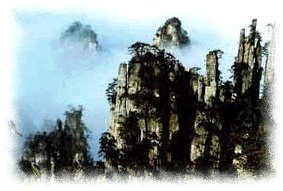
|
The greatest attractions the Wuling mountains offer to sightseers are primitive natural scenery, particularly in the Wulingyuan Scenic district, which is made up of Zhangjiajie, Tianzishan, and Suxiyu, surprises tourists greatly with its strange-looking rocks and peaks, limpid streams, shady woods, and magical mists. The peaks are usually above 200 meters in height. There are 560 scenic spots in the area which contains 538 kinds of woody plants, 27 kinds of trees, 962 different types of animals and birds, of which 20 are rare and are under state protection.
The natural wonders include high peaks and miracle cliffs. Some are like gold whips towering to the skies. Some resemble impregnable iron forts. Standing on the tops of Tianzishan and Yellow Lion Village, one can look into the distance and have a good view of the layers after layers of fogbound peaks looking like turbulent waves or the gallop of thousands of horses. The naturally shaped "Assembly of Troops From Heaven", "Golden Tortoise in Mist", "the General-like Rocks", "Fairy Scattering Flowers," "Couple Rocks," and other figure-like rocks are lively and provide great fun. "Long Gallery", deep valleys, and natural interests in four seasons are majestic and spectacular. Every spot here has its own mythical story and attracts the attention of many sightseers.
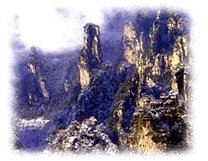
|
Zhangjiajie is the pearl of Wulingyuan. Thousands of stone peaks stand out with snaking creeks flowing through then and wild flowers and plants all over. Countless fantastically-shaped peaks and rocks dot the area, just like a natural museum of sculpture. The scenery in Zhangjiajie can be characteristically described as beautiful, wild, grotesque, and refreshing. Major sights include the Yaozizhai Scenic Area, the Huangshizhai Scenic Area, Jinbian Creek, and Jinbian Cliff, where precipitous cliffs and steep slopes are the main attraction; and Shandaogou, a mysterious and wild valley. In 1982, Zhangjiajie Area was classified as a National Park.
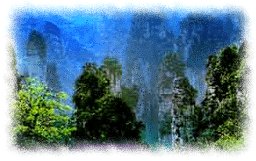
|
Suoxiyu Scenic Area is famous for its landscape of craggy peaks and huge rock columns rising out of the luxuriant subtropical forests. Suoxiyu is a natural botanical garden and zoo. Here tourists can have a view of naturally shaped grotesque rocks, unpredictable clouds and fog, grand waterfalls, cold springs, mirroring lakes, the mystic Underground House and Dragon Palace, and elegant relics. Major sights include the 10 - 11 Gallery, known as a natural sculpture museum;
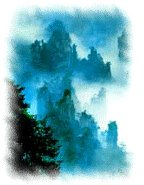
|
Tianzi Shan
The king of all the peaks in Wulingyuan is the Tianzi Mountain. Local legends say that an ancient Tujia chieftain who aspired to become the Tianzi (Son of Heaven) gathered his people and launched an uprising on this peak. This is a land teeming with mystery. There is a flyover, two pools, three ancient temples, four gates, five waterfalls, six caves, seven scenic spots, 84 natural view platforms, and 9,990 peaks. Major sights include the forest of peaks and rocks, the Heavenly Pool, the Temple of the Son of Heaven, and the Waterfall of Lovebirds.
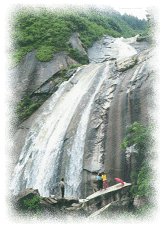
|
Heng Shan, also known as South Mountain, ranks the first among the five sacred mountains in China. It is also a famous mountain worshipped by Buddhists in China. Mount Heng, situated in central Hunan, extends 150 kilometers. The highest peak on the mountain is Zhurong peak, which is 1,290 meters above sea level. It is the best place to view a morning sunrise. On top of the peak is the Zhurong Hall, a Taoist temple. In the summer Mount Heng is an ideal resort place, and in winter it is an ideal place on which to view snow scenery.
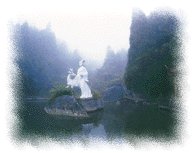
|
Taohuayuan, situated 43 kilometers from Changde City, faces the surging Yuan River and backs on to high mountains. In the spring, petals of red peach flowers fall in riotous profusion as streams filled with clear water and the paths wind along, presenting a beautiful piece of scenery. The place is well-known in the world for the masterpiece "Notes on Taohuayuan" written by Tao Yuanming, a great poet of the Jin Dynasty.
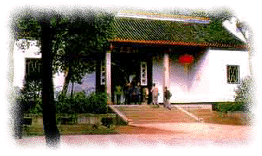
|



 Chinese Culture
Chinese Culture